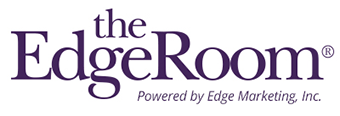https://www.theedgeroom.com/wp-content/uploads/2023/01/edge-room-updated-1.png
0
0
jordan@securereview.com
https://www.theedgeroom.com/wp-content/uploads/2023/01/edge-room-updated-1.png
jordan@securereview.com2021-01-29 13:27:502021-01-29 13:27:50WFH Cybersecurity: 5 Critical Questions You Should Ask
https://www.theedgeroom.com/wp-content/uploads/2023/01/edge-room-updated-1.png
0
0
sarena@hanzo.co
https://www.theedgeroom.com/wp-content/uploads/2023/01/edge-room-updated-1.png
sarena@hanzo.co2021-01-29 13:24:092021-01-29 13:24:09Got #Slack but no solution for #ediscovery ? Check out the ebook - Slack Collaboration Data: The Guide to Preserving & Collecting Critical Enterprise Data by @gethanzo #Legalweek21
https://www.theedgeroom.com/wp-content/uploads/2023/01/edge-room-updated-1.png
0
0
Sujin.chai@imanage.com
https://www.theedgeroom.com/wp-content/uploads/2023/01/edge-room-updated-1.png
Sujin.chai@imanage.com2021-01-27 19:01:022021-01-28 10:41:47Modern Document Management: How Law Departments Can Work Smarter
https://www.theedgeroom.com/wp-content/uploads/2023/01/edge-room-updated-1.png
0
0
BMeegan@prosearch.com
https://www.theedgeroom.com/wp-content/uploads/2023/01/edge-room-updated-1.png
BMeegan@prosearch.com2021-01-27 18:56:042021-01-27 18:56:04What's happening with Technology Assisted Review? ProSearch TAR experts offer a primer.
https://www.theedgeroom.com/wp-content/uploads/2023/01/edge-room-updated-1.png
0
0
BMeegan@prosearch.com
https://www.theedgeroom.com/wp-content/uploads/2023/01/edge-room-updated-1.png
BMeegan@prosearch.com2021-01-27 08:19:372021-01-27 08:19:37The struggle is real! Employment disputes drive Practical Insights for Responding to Employee DSARs.
https://www.theedgeroom.com/wp-content/uploads/2023/01/edge-room-updated-1.png
0
0
BMeegan@prosearch.com
https://www.theedgeroom.com/wp-content/uploads/2023/01/edge-room-updated-1.png
BMeegan@prosearch.com2021-01-25 12:08:142021-01-25 12:08:14What's happening with Technology Assisted Review? ProSearch TAR experts offer a primer.
https://www.theedgeroom.com/wp-content/uploads/2023/01/edge-room-updated-1.png
0
0
Sujin.chai@imanage.com
https://www.theedgeroom.com/wp-content/uploads/2023/01/edge-room-updated-1.png
Sujin.chai@imanage.com2021-01-25 09:49:082021-01-25 09:49:08Modern Document Management: How Law Departments Can Work Smarter
https://www.theedgeroom.com/wp-content/uploads/2023/01/edge-room-updated-1.png
0
0
Sujin.chai@imanage.com
https://www.theedgeroom.com/wp-content/uploads/2023/01/edge-room-updated-1.png
Sujin.chai@imanage.com2020-02-04 11:09:192020-02-04 11:09:19The Power of Understanding: Artificial Intelligence in the Legal World
https://www.theedgeroom.com/wp-content/uploads/2023/01/edge-room-updated-1.png
0
0
angie.roberts@lexisnexis.com
https://www.theedgeroom.com/wp-content/uploads/2023/01/edge-room-updated-1.png
angie.roberts@lexisnexis.com2020-01-24 16:43:052020-01-24 16:43:05Gen Z Rising: How the Next Generation of Lawyers is Reshaping Law Firms
https://www.theedgeroom.com/wp-content/uploads/2023/01/edge-room-updated-1.png
0
0
ragav@klstinc.com
https://www.theedgeroom.com/wp-content/uploads/2023/01/edge-room-updated-1.png
ragav@klstinc.com2020-01-24 16:42:262020-01-24 16:42:26Accelerate Digital Transformation with KLST's customer centric services



